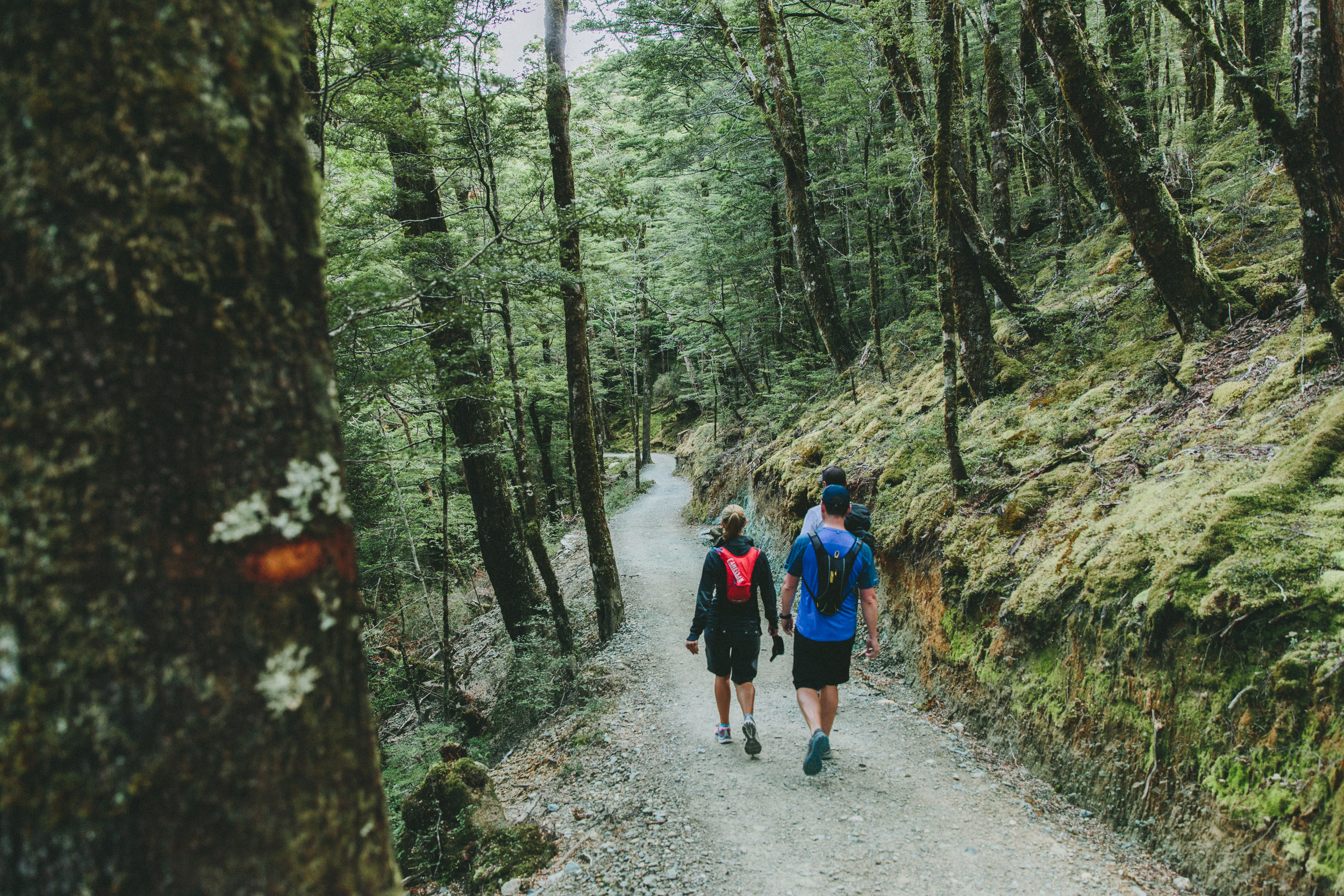
What is Forest Therapy?
What is Forest Immersion, Forest Therapy, and Forest Bathing?
Forest immersion comes out of the practice of Forest Therapy, which promotes health and well-being through the process of engaging oneself fully in nature’s restorative and calming forest environment. A Forest Therapy guide can enhance your experience of immersion, which is also commonly called forest bathing. In a similar way to “sunbathing” in the sunshine, the concept of forest bathing invites you to bathe in the forest’s environment, using your senses to experience nature around and within you. An immersion in forest bathing (also known as shinrin yoku) is an experience that emerged in Japan in the 1980s as a medicinal or well-being practice. This practice came out of Japan’s effort to combat the negative human health impacts of the developing technology boom.
Forest Bathing’s Development
Forest bathing has further become recognized as a preventative medicine within the academic field of Forest Medicine and is a rapidly developing global practice for holistic health. The practice of forest bathing has continued to grow and support the development of the academic discipline of Forest Medicine, founded by Dr. Qing Li.
Dr. Qing Li has become the world’s foremost expert in Forest Medicine. He is a physician at Tokyo’s Nippon Medical School, and a previous visiting fellow at the Stanford University School of Medicine. He is also a founding member and chairman of the Japanese Society for Forest Medicine, a leading affiliate of the Task Force of Forests and Human Health, and the vice president and secretary general of the International Society of Nature and Forest Medicine.
With Forest Medicine’s extensive research into the many positive effects of the forest environment on human health, this research gives evidence that being present in nature positively affects one’s physiological and psychological well-being.
Health Benefits of Forest Immersions
As you are guided in a forest immersion through the process of Forest Therapy you can experience some of the overall holistic health benefits in your whole being: body, mind, and spirit. According to a study in the National Library of Medicine, “Current literature supports the comprehensive health benefits of exposure to nature and green environments on human systems”. [1] These health benefits are derived in part from the phytoncides, or essential oils, in the forest atmosphere released by the trees residing there. These various phytoncides have antimicrobial and antifungal properties and not only protect the trees from harmful viruses, bacteria, and insects but they also have a positive impact on human health. Studies have shown that breathing in phytoncides can create various positive impacts in the human body. Depending on the duration of a forest bathing immersion, some of these benefits can last days and even weeks and may include:
Psychological Influences
An immersive walk in the forest has been shown to mitigate acute and chronic psychological stress such as depression and anxiety. Studies also indicate that forest immersion can also impact short term memory, attention, and problem solving.Immune System Vitality
Extensive research has shown how forest bathing and exposure to phytoncides can increase not only the number of NK cells[1] in the immune system but also their activity. These cells are important for human immunity, including one’s defense against cancer. Stress also causes increases in the hormone cortisol which can dampen the immune system and make one more prone to other diseases. Forest bathing has been shown to decrease levels of cortisol (the primary stress hormone) and counteract some of the negative effects of stress within one’s whole being.Cardiovascular Health
Extensive research shows forest immersion can have a positive influence on cardiovascular health as evidenced by potential reductions in blood pressure and heart rate. Phytoncides benefit the balance between the sympathetic nervous system (fight or flight) and the parasympathetic nervous system (relaxation response) and in this way, it helps lower blood pressure and heart rate.
[1] Hansen MM; Jones R; Tocchini K. Shinrin-Yoku (Forest Bathing) and Nature Therapy: A State-of-the-Art Review. Int J Environ Res Public Health. 2017 Jul 28;14(8):851. (In the National Library of Medicine)
___
A few references and additional resources
Books and research articles
Written by the founder of ANFT: Clifford, Amos (Your Guide to Forest Bathing: Experience the healing power of nature. Newburyport, MA. Conari Press
Written by the expert in Forest Medicine, this book is filled with various forest medicine research journal articles: Li, Qing** (ed.) (2012) “Forest Medicine” MA: Nova Biomedical
A summary book of Dr. Li’s Forest Medicine research: Li, Qing (2018) Forest Bathing: How trees can help you find health and happiness. New York, Viking
Marvin, Liz (2020) How to Be More Tree: Essential life lessons for perennial happiness. New York. Clarkston Potter
Dr. Yoshfumi is renowned for his work in the ‘healing power of the forest’ Miyazaki, Yoshifumi (2018) “The Japanese Art of Forest Bathing: shinrin yoku” Portland, Oregon: Timber Press
Online references and resources
ANFT: Association of Nature and Forest Therapy (International training organization of Forest Therapy guides)
https://www.natureandforesttherapy.earth/
Hansen MM; Jones R; Tocchini K. Shinrin-Yoku (Forest Bathing) and Nature Therapy: A State-of-the-Art Review. Int J Environ Res Public Health. 2017 Jul 28;14(8):851. (In the National Library of Medicine)
https://www.health.harvard.edu/blog/can-forest-therapy-enhance-health-and-well-being-2020052919948
https://www.forestholidays.co.uk/things-to-do/forest-bathing/benefits/
https://www.mamanatural.com/forest-bathing/
https://www.ncbi.nlm.nih.gov/pmc/articles/PMC2793341/
https://www.ncbi.nlm.nih.gov/pmc/articles/PMC5580555/
https://www.conserve-energy-future.com/amazing-benefits-of-forest-bathing.php
